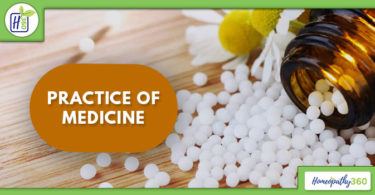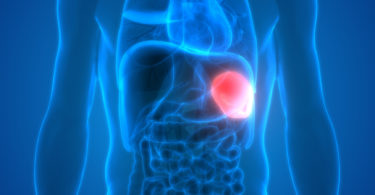Authored By-
Dr Prashant Chavan
M.D. (Hom).
Dept. of Community Medicine
Yenepoya Homoeopathic Medical College and Hospital
Mangalore, Dakshina Kannada, Karnataka
Abstract.
Upper respiratory tract infections (URTIs) are very common in rainy season. There are certain homoeopathic remedies which are very effective among children in conditions of URTIs. Homoeopathic remedies also help in reducing the severity and recurrent attacks of infections of URTIs. This information will be very useful to many children’s in society who suffer from infections of upper respiratory tract.
Introduction
Infections of Acute respiratory tract are around 20–40% of outpatient and 12–35% of inpatient attending in hospital. Diseases like nasopharyngitis, pharyngitis, tonsillitis and otitis media constitute 87.5% of the total episodes of respiratory infections. The majority of acute upper respiratory tract infections are caused by different virus. In most of circumstances Common cold does not require antimicrobial agent unless it is complicated by acute otitis media with effusion, tonsillitis, sinusitis and lower respiratory tract infection. Sinusitis is commonly associated with common cold. Most instances of rhino sinusitis are viral and therefore resolve spontaneously without antimicrobial therapy. The most common bacterial agents causing sinusitis are pneumonia, influenza Mcatarrhalis, Saureus and S.pyrogenes.
A nonspecific term used to describe acute infections which involve the nose, paranasal sinuses, pharynx, larynx, trachea, and bronchi. The condition known as common cold is studied in addition to pharyngitis, sinusitis, and tracheobronchitis. Systemic illness Influenza involves the upper respiratory tract and should be differentiated from other URIs. The URIs are caused by virus like rhinovirus, parainfluenza virus, corona virus, adenovirus, respiratory syncytial virus, Les common causes of bacterial pharyngitis include group C beta
Arehaemolytic,streptococci,corneybacteriumdipthriae,neisseriagonococci,Arcanobacterium haemolyticum, Chlamydophila(formerly,Chlamydia)Pneumoniae,Mycoplasma,pneumoniae,HerpesSimplexVirus.Streptococcus,pneumonia. At present URIs is taking us to new era of disease and at present Covid19 has become the threat in society.
Classification
Upper respiratory tract infections are classified by area inflamed rhinitis which affects the nasal mucosa, sinusitis affects the nose and paranasal sinuses which includes frontal,ethmoid,maxillary and sphenoid sinuses.Nasopharyngitis (rhinipharyngitis or common cold) the nares,pharynx,hypopharynx,uvula and tonsils. Without involving the nose, pharyngitis inflames the pharynx, hypopharynx uvula and tonsils. Supraglottitis inflames the superior portion of larynx and supraglottic area. Infection in larynx causes Laryngitis, laryngotrachetitis in larynx and trachea, trachetitis in trachea.
Signs and symptoms
The clinical manifestations of the different forms of URIs, onset of symptoms occurs 1 to 3 days after exposure to the infectious agent. Congestion in nose, sore throat, sneezing are important symptoms of common cold. Conjunctivitis is characteristically seen with adenovirus infections. Sore throat, fever, absence of cough and exposure to a streptococcal pharyngitis in the preceding 2 weeks suggest the diagnosis of GABHS-related pharyngitis. Acute bacterial rhino sinusitis has symptoms for more than 1 to 2 weeks after common cold, unilateral facial pain, maxillary toothache, headache and excessive purulent nasal discharge. The illness like acute tracheobronchitis is characterized by cough with or without sputum production, wheezing lasting 1 to 3 weeks. Influenza is a sudden illness characterized by high fever, severe headache, myalgia and dry cough followed by significant fatigue and malaise. Barr virus, cytomegalovirus or human immune deficiency virus. Patients with influenza appear toxic and may have pulmonary ronchi and diffuse muscle tenderness. In uncomplicated colds, cough and nasal discharge may persist for 14 days or more even after other symptoms have resolved. AUTIs include pharyngitis, tonsillitis, rhinitis and laryngitis often referred as a common cold and their complications sinusitis,ear infection and sometimes bronchitis.(though bronchi are generally classified as part of the lower respiratory tract) Symptoms of URTIs commonly include cough, sore throat, runny nose, nasal congestion, headache and low-grade fever, facial pressure and sneezing.Consistency or colour change in mucous discharge from yellow to thick or green are the natural course of viral upper respiratory tract infection.
Cause
In pathophysiology rhino virus infection resembles the immune response. No damage is caused by virus to the cells of the upper respiratory tract but rather cause changes in the tight junctions of epithelial cells.This allows the virus to gain access to tissues under the epithelial cells and initiate and adaptive,immune,responses. Upto 15% of acute pharyngitis cases may be caused by bacteria most commonly a group A streptococcus (“Strep throat”). Sexually transmitted infections have emerged as causes of oral and pharyngeal infection.
Diagnosis
URI, seasonal allergies, influenza, symptom comparison.
| Symptoms | Allergy | URI | Influenza |
| Itchy, watery eyes | common | Rare(conjunctivitis may occur with adenovirus) | Soreness behind eyes sometimes conjunctivitis |
| Nasal discharge | common | common | Common |
| Nasal congestion | common | common | sometimes |
| Sneezing | Very common | Very common | sometimes |
| Sore throat | sometimes | Very common | sometimes |
| Cough | sometimes | Common (mild to moderate ,hacking) | Common(dry cough ,can be severe) |
| Headache | uncommon | Rare | Common |
| Fever | never | Rare in adults, possible in children | Very common 100-102 degree F(or higher in young children),lasting 3-4 days, may have chills |
| Malaise | sometimes | sometimes | Very common |
| Fatigue weakness | sometimes | sometimes | Very common(can last for weeks, extreme. exhaustion in early course) |
| Muscle pain | never | slight | Very common(often severe) |
Prevention
There is low or very-low quality evidence that probiotic may be better than placebo in preventing acute URTIs. Vaccination against influenza viruses, adenoviruses, measles, streptococcus pneumoni, bacillusanthrsasis and bortedellapertusis may prevent them from infecting the URT or reduce the severity of the infection.
Homoeopathic approach.
Detailed case history will be taken of the patients.
| Name | Active ingredients | Traditional Materia Medica(minimumextractfrom generalities) | |
| Aconite nappelus | Ranuncolaceae. Contains aconitine , tyramine dopaine |
Complaints caused by exposure to dry cold air,. Fear, anxiety, restlessness,
fright,complaintand,tension caused by exposure to dry,coldweather; inflammatory fevers, affected serous membranes . | |
| Allium cepa | Contains,phenolic,acids,thiosulfinates,and flavooids. | Profuse watery discharge from the nose, with sneezing, acrid burning, excoriating the nose and upper lip.-Fluent coryza, with running of water from the eyes, headache, heat, thirst, > in the open air.-Ichor oozing out of nose,sensitive to odours of flowers and skin od peach. | |
| Belladonna (Atropa belladonna ,deadly night shade) |
One of the most
poisonous plants,contains,tropanealkaloidincluding atropine,scopolamine, and hyoscyamine, which are used as anticholinergics. These alkaloids can be very toxic,at high dose. | sensitive to drafts of air, especially when uncovering the head; from having the hair cut; tonsils become inflamed after riding in a cold air acts upon nervous system,producing active,congestion,excitement; marked actionon,thevascular,system,throbbingcarotids, excited mental state, hyperaesthesia of all senses, dryness of mouth and throat with aversion to water. | |
| Bryoniadiocia (or alba) |
Cucurbitaceae.Themajor active components are cucurbitacin glucosides.biological activities ofthese,compounds are associated,with biosynthesis eicosanoids,andcorticosteroids, which are important mediators in the immune, endocrine,andnervous systems. Potential,adaptogen stress protective,DihydrocucurbitacinD inhibits macrophage nitric oxide,generation.Antioxidant activity |
Aggravates complaints when warm weather sets in, after cold
days; from cold drinks or ice in hot weather; after taking cold or getting
hot in summer; from chilling when overheated; kicks the covers off; from
exposure to draft, cold wind Acts on serous membranes,irritable; dry cough rheumatic pains and swellings; coryza tough mucus in larynx and trachea. | |
| Drosera rotundifolia |
Droseraceae.Contains glucides, various acids, flavonoid pigments,proteases, naphthoquinones | Deep sounding, hoarse barking cough (Verb.), < after midnight, during or after measles; spasmodic, with gagging. Minute gun cough. | |
| Heparsulphuris calcareum |
A burned combination the innerlayer of
oyster shells (Calcarea,carbonica)with flowers of sulfur. It is also known as calcium sulfide. Hepar is the Latin word for liver, as certain compounds of sulphur . | Extremely sensitive to cold air, imagines he can feel the air if a door is open in the next room; must be wrapped up to the face even in hot weather.Lymphatic constitutions; unhealthyskin,greatsensitiveness to all impressions; special,affinity to the respiratory,mucousmembrane,producing,catarrhal inflammation, profuse secretion; | |
| Kaliumbichromium | Potassium dichromate |
Complaints occurring in hot weather. Liability to take cold in
open air.
Affects mucous membrane of stomach,bowels,and
air passages; especially indicated for fleshy, fat, light complexioned persons subject,tocatarrhs,symptoms are worse in the morning,more adapted to subacute rather than the violent,acutestage,mucousmembranes everywhere are affected; catarrh of pharynx larynx, bronchi and nose | |
| Mercurius (biiodatus or solubilise) | A liquid metallic chemical element,with the symbol ‘Hg’ |
Much sneezing; fluent, acrid, corrosive; nostrils raw,
ulcerated; yellow-green, fetid, pus-like; nasal bones swollen; < at night
and from damp weather.
Lymphatic system is especially affected.
Symptoms are worse at night, from warmth of bed, from damp, cold, rainy weather; complaints increase with the sweat and rest; all, sensitive to heat and cold breath,excretionsand,body smells foul | |
Conclusion.
Homeopathic medicines found very effective for the treatment of patients with symptoms of URTIs and othorhinolaryngologic infections. Homoeopathic remedies also help in reducing the severity and recurrent attacks of infections of URIs.
Bibliogrgraphy
1. Pocket Manual of Homoeopathic MateriaMedica, Repertory, By
Dr. William Boericke
2.Lectures on Homoeopathic MateriaMedica, By Dr.
James Tyler Kent.
3. Hahnemann Samuel. Organon of Medicine.6th
edition. B. Jain Publishers (P) Ltd. New Delhi; 2002. 153,158,217pp.
4 Hahnemann Samuel.The Chronic Diseases (Theoretical Part). B. Jain Publishers (P) LTD. NEW DELHI;1998.28,31pp.
5 PrafullVijaykar.The End of Myasmtion of Miasms.Predictive Homoeopathy Part III.PreetiVijaykar Publisher. Mumbai: 2012.71,72pp..
6. Software Like RADAR.
7. Alcaide
ML, Bisno AL: Pharyngitis and epiglottitis.Infect Dis ClinNorthAm
2007; 21:449.
8. Bisno AL: Acute pharyngitis.NEngl J Med2001; 344:205.
9. Esposito
S, et al: Acute tonsillopharyngitis associated with atypical
bacterial infection in children: Natural history
and impact of macrolide
therapy.Clin Infect Dis2006; 43:206.
10.
Tiemstra J, Miranda RL: Role of non–group A streptococci in acute
pharyngitis.J Am Board Fam Med2009; 22:663.
11. Bisno
AL, et al: Practice guidelines for the diagnosis and management of
group A streptococcal pharyngitis.Clin Infect
Dis2002; 35:113.





